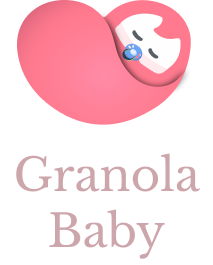Those courageous individuals who have opted to undertake homeschooling their young child understand the challenge of managing a preschooler's passions, requirements, abilities, and learning. So, how can you strike a balance between a preschooler's desire for exploration and their impatience?
Engaging sensory exercises are an excellent method to captivate and instruct your preschooler. Your child will get to experience a concept through their five senses (touch, taste, sound, sight, and smell). For instance, you could arrange a container of dirt, seeds, and gardening tools to introduce the idea of agriculture.
Sensory tasks can be enjoyable, captivating, and informative for little scholars. What's more, you can seamlessly integrate them into your homeschooling schedule!
What are the advantages of sensory activities for preschoolers?

Young children and toddlers are naturally curious and enjoy exploring, so sensory activities are beneficial as they are intended to be manipulated. Whether you create an activity involving sand and building blocks or fill a bottle with water and sequins, preschoolers enjoy sensory activities and effectively learn through their own exploration.
Incorporating sensory activities into your pre-k homeschooling schedule is a smart decision due to the following advantages.
Engaging in sensory activities enhances cognitive development
Activities that stimulate the senses are beneficial for the cognitive growth of young children. Engaging in sensory play allows them to process new sensory information by talking through pretend scenarios, problem-solving, critical thinking with available tools, and forming sensory memories.
From the moment of birth, the brain forms connections mainly through sensory input such as hearing and sight. Around 4 or 5 months, babies start recognizing syllables and experimenting with vocalization.
By the time a baby reaches toddlerhood at 12 months, they are establishing connections for advanced cognitive functions like memory, mental visualization, and purposeful behavior. The rapid formation of neural connections in children between 0 and 3 years old, estimated at 1 million per second, highlights this period's significance for cognitive development.
Furthermore, some research indicates that 3 to 5-year-olds possess superior reasoning, memory, and decision-making skills compared to older individuals. Therefore, engaging with a preschooler's interests and natural inclination to explore through various activities is crucial for their brain development.
Engaging in Activities that Stimulate the Senses Promotes Language Development
Engage your young child in a sensory experience and give her some room to explore, then pay attention to her verbalizations. It's likely she will start incorporating new noises in make-believe scenarios to "explain" the sensory experience, and she may chatter away as she engages in her imaginative play. This is highly beneficial for fostering language skills!
You can also join in or observe her play and narrate what you are both doing during the activity. Avoid using simplified language because your child is listening to you to learn how to articulate her own actions. Sensory activities are fantastic for introducing relevant words related to specific situations that she might not encounter otherwise.
While speaking, make use of different verb forms to describe what you are currently doing, what you did earlier, and what you will do next. English can be complex grammatically, so it's a good idea to start demonstrating to your child how to describe actions in different time frames from a young age!
Engaging in sensory experiences improves the development of fine and gross motor abilities.
Numerous sensory tasks involve the utilization of your child's hands and fingers, an essential step towards acquiring the precise coordination needed for writing and intricate activities in the future. Challenging courses and outdoor sensory experiences promote gross motor abilities such as leaping, crawling, and sprinting.
Refining fine and gross motor skills involves repeated attempts and practice. Fortunately, creating opportunities for practice is straightforward! To enhance fine motor skills, experiment with these suggestions:
- stacking blocks
- making racetracks
- building forts
- doing crafts
- painting
- coloring
- sorting colored beads
Large motor skill activities are also very enjoyable! Here are some to help your preschooler begin:
- obstacle course
- tag
- hide-and-seek
- rolling a ball to each other
- follow the leader
- "the floor is lava" game
- Simon Says
- "find me a _____" game
Engaging Activities Spark Creative Play and Imagination
The ability of young children to transform everyday items into imaginative adventures is truly remarkable! It appears that engaging in imaginative play is essential for solidifying the knowledge they have acquired.

Pretend play acts as a catalyst for communicating in different settings, exploring alternative outcomes for real-life situations, tackling make-believe challenges, managing emotions, practicing social skills, and brainstorming solutions to ongoing issues.
In essence, make-believe play is crucial for the overall development of a child. While sensory activities may seem like simple components of unstructured play, they provide a foundation for exploring, observing, discovering, engaging in imaginative play, and fostering creativity.
An Illustration of a Sensory Activity
Suppose you've prepared a large container filled with sand and added a shovel, funnel, bottle, cup, paper towel roll, and bulldozer toy. Your young child will probably enjoy the sensation of the sand, covering their hands and watching as the sand cascades through their fingers. However, soon enough, they will begin experimenting with using the various tools you have laid out for them.
Throughout this sensory experience (and as you revisit it on multiple occasions), your child will acquire knowledge through hands-on engagement and repetition:
My movements influence the happenings inside this container.
- The sand has a rough texture.
- Grains of sand trickle down.
- I'm able to collect sand and pass it through different objects.
- Objects get concealed by the sand.
- My hands aren't as effective as a scoop in lifting the sand.
- I'm capable of creating imprints in the sand, which will remain until I shift things around.
Naturally, your young child will not articulate these terms, but comprehension of these concepts will improve with continued repetition. Other advantages your young child will acquire from engaging in this sensory task include:
- Recollections of the way sand shifts and the texture it offers
- Precise dexterity in shaping hands, grasping sand, forming shapes, shifting sand, moving objects through sand, dropping objects gently or gradually, and holding and utilizing instruments
- Watching the movements of sand
- Inventive reasoning on how to leverage these instruments to control the sand
- Regulating emotions and remaining composed while engaged in a fascinating activity
- Chattering about the activities with the sand
- Inventing sound effects for the noises the sand produces during certain activities
- Envisioning construction situations and acting them out
All of this can be accomplished by allowing your child to play with a box of sand and a few miscellaneous tools. Your preschooler will essentially learn on their own through observation and exploration, which is ideal! After all, how else could you convey these lessons to him?
7 Original Sensory Activity Ideas
Engaging in sensory activities is an excellent way to keep young children entertained and informed. Making sure to have a few ideas on hand will allow you to plan a one-of-a-kind sensory adventure for your child.
Sensory activities can range from basic (like tinted rice in a container) to intricate (like arranging a finger art project). Below are seven distinct sensory activities I have happily engaged in with my own preschool-aged children.
1. Texture Exploration (4 and 5-year-olds)
After observing my children's ability to recognize textures, I organized a texture treasure hunt. To set this up, gather a selection of items with different textures and hide them inside the house or in the yard. Then, you can assist your youngsters with hints (older kids), using "warmer" and "colder" cues (younger kids), or with images (younger kids).
For instance, you could conceal three to five distinct textured objects in a room or the house, such as rough sandpaper, a squishy sphere, a soft blanket, a sleek chalkboard, and a woven container. You could offer these clues for each item:
What is extremely rough and gritty but as flat as paper?
- Which ball is simple to squeeze but not bouncy?
- What is very cozy, gentle, and comforts you during the night?
- What is sleek and dark but becomes dirty when you write on it?
- What can carry many things but not hold liquids?
If your little one struggles to guess the answer, provide a hint related to the location where she might discover an object that matches the description. You may be amazed by how well your preschooler can engage in this activity!
For a more straightforward option for your preschooler, try requesting something furry, scratchy, green, or an object that produces a specific noise. This could help boost her self-assurance before progressing to the more intricate version mentioned earlier.
2. Cooking and Baking (2 to 5-years-olds)
Preparing food and making sweet treats are great activities for young children aged 2 to 5. They are educational experiences that engage various senses and come in different levels of complexity. Furthermore, they are essential life skills that your child will eventually need.
You can include your preschooler in the process of cooking meals, making snacks, or baking goodies to share with others. Whether it's making a fruit salad, gelatin, bread, cookies, cake, eggs, or pasta, the options are endless!
While it's important to ensure your child's safety around hot surfaces and sharp objects, you can teach them about these precautions and how to be attentive in the kitchen. After cooking or baking, you can even demonstrate how to clean up by washing the dishes!
3. Feng Shui (3 to 5-year-olds)
Gather a container or basket and gather some of your child's small house playthings. Then, explain that a tiny figure will be moving into the container soon but needs assistance organizing her furniture. If your preschooler enjoys playing with dolls or small figures, they may find this activity enjoyable.
You can make this task more or less challenging depending on your child's abilities. My kids enjoyed using dominoes as partitions or furniture and would sometimes rush to get other small toys to act as additional pieces of furniture. This exercise is excellent for developing spatial awareness and fine motor skills.
4. Interactive Story Time (2 to 5-year-olds)
If you own interactive storybooks (with various textures on the pages), then bring them for the little ones. However, older preschoolers might enjoy actively participating in creating sensory experiences while listening to the story.
For instance, you can gather a selection of miscellaneous objects to produce sounds, textures, and colors that enhance the storytelling experience.
Props may include shoes for walking sounds, a rainstick for simulating rain, a partially filled water bottle for water effects, some modeling clay for squishy noises, a battery-operated fan for gusts of wind, a flashlight for sunlight, ... let your imagination run wild!
5. Sensory Challenge Course (ages 3 to 5)
Collect various materials with different textures or sounds and create a course for your young child indoors or outdoors. Arrange it so that your little one has to navigate by touching only a particular texture or color while avoiding the rest.
Possible items to include are bubble wrap, colorful cardboard pieces, sofa cushions, wood, stones, and any other materials you can imagine for this fun task.
6. Listening Activity for Young Children (2 to 5 years old)
To engage your child in a listening activity, gather various items that produce distinct sounds and have them guess what each one is without seeing it.
Once they become skilled at this, you can pair each sound with a specific movement and challenge them to move in accordance with the sound you play to navigate through a space.
For instance, you may try the following:
- drum = stomp
- whistle = jump
- cymbal = somersault
- snapping fingers = jump backwards
- clapping hands = run
- clinking spoons = walk in slow motion
Let your imagination run wild and have a blast with this task!
7. Chopstick Activity for Young Children (3 to 5 years old)
Get a baking sheet or tray and place some Cheerios, raisins, peanuts, dark chocolate chips, mini marshmallows, and any other small snacks that your child enjoys. Place it on a stable table and give your child a set of chopsticks or plastic tweezers.
For some reason, my preschoolers absolutely enjoy this hands-on task and are surprisingly skilled at using chopsticks! To make it more challenging, add some colorful cereal to the mix and encourage your child to use the chopsticks to separate the different cereals.
Advice for Including Sensory Activities in Homeschooling
If you are educating your preschooler at home, sensory experiences are a great help! Engaging in sensory tasks can aid in your child's overall growth and offer an enjoyable learning chance to share.

There will certainly be some challenging days, but rest assured that the effort of homeschooling your preschooler is worthwhile! Below are some useful recommendations derived from personal experience:
- Incorporate sensory tasks into your daily routine.
- Stay on top of things and prepare in advance.
- Keep things uncomplicated; your preschooler will likely appreciate simplicity.
- Select activities that captivate your preschooler.
- Stay adaptable and remember to take deep breaths--not everything will be successful or go according to plan!
To put it simply,
Incorporating special sensory activities for preschoolers into your daily schedule is a fun way to keep your child entertained and educated, and it's beneficial for them! By offering these enjoyable experiences, you are supporting your child's cognitive, language, motor, and creative growth. Additionally, your little one may impress you with how enthusiastically they enjoy sensory activities!




